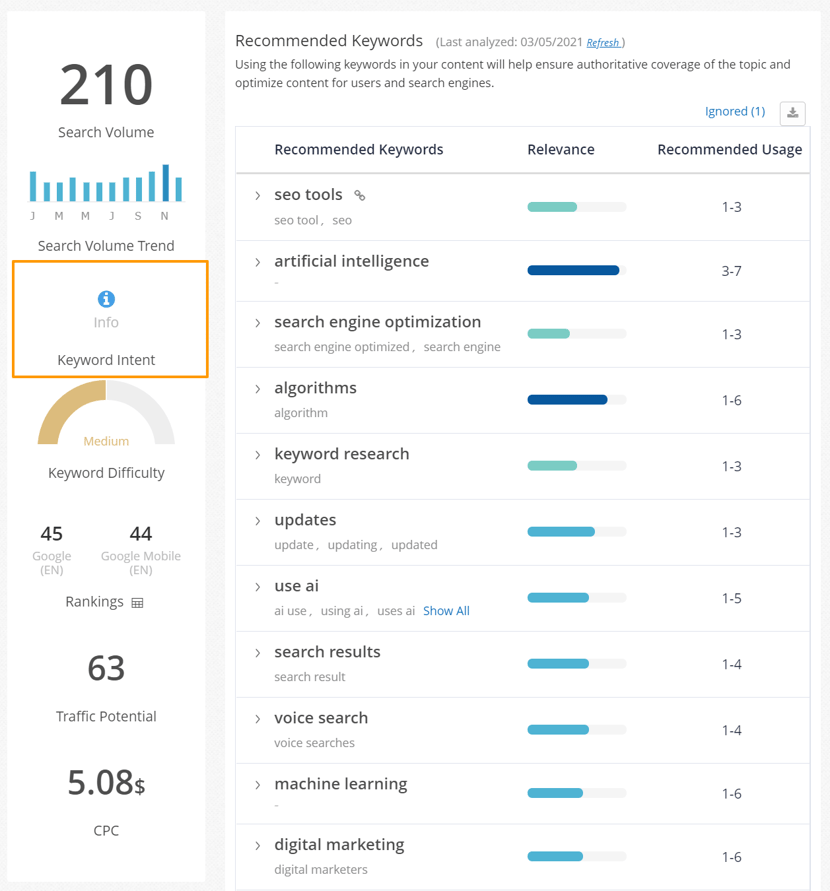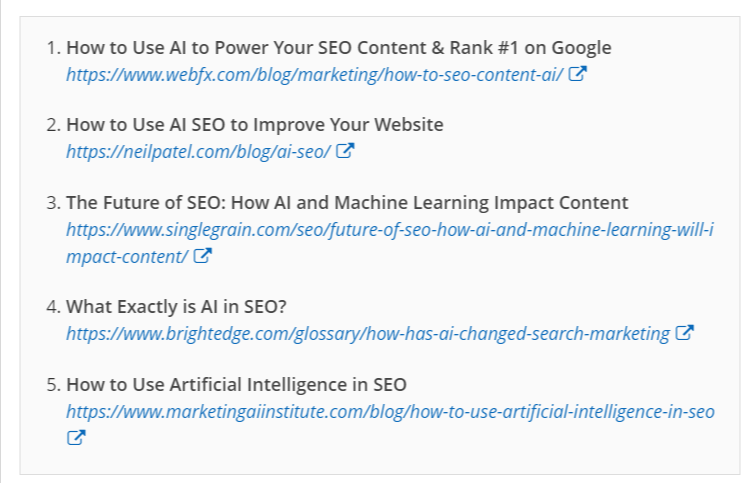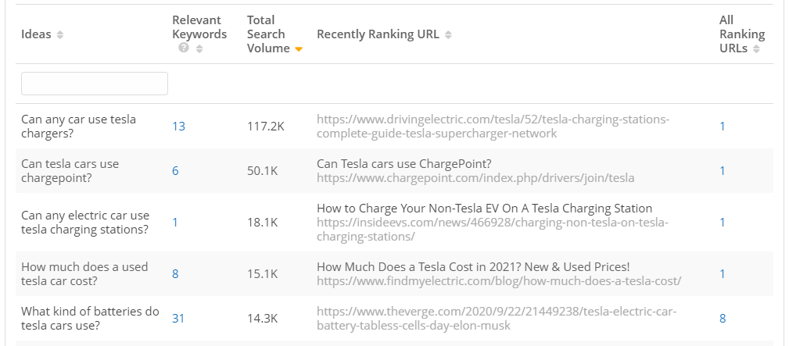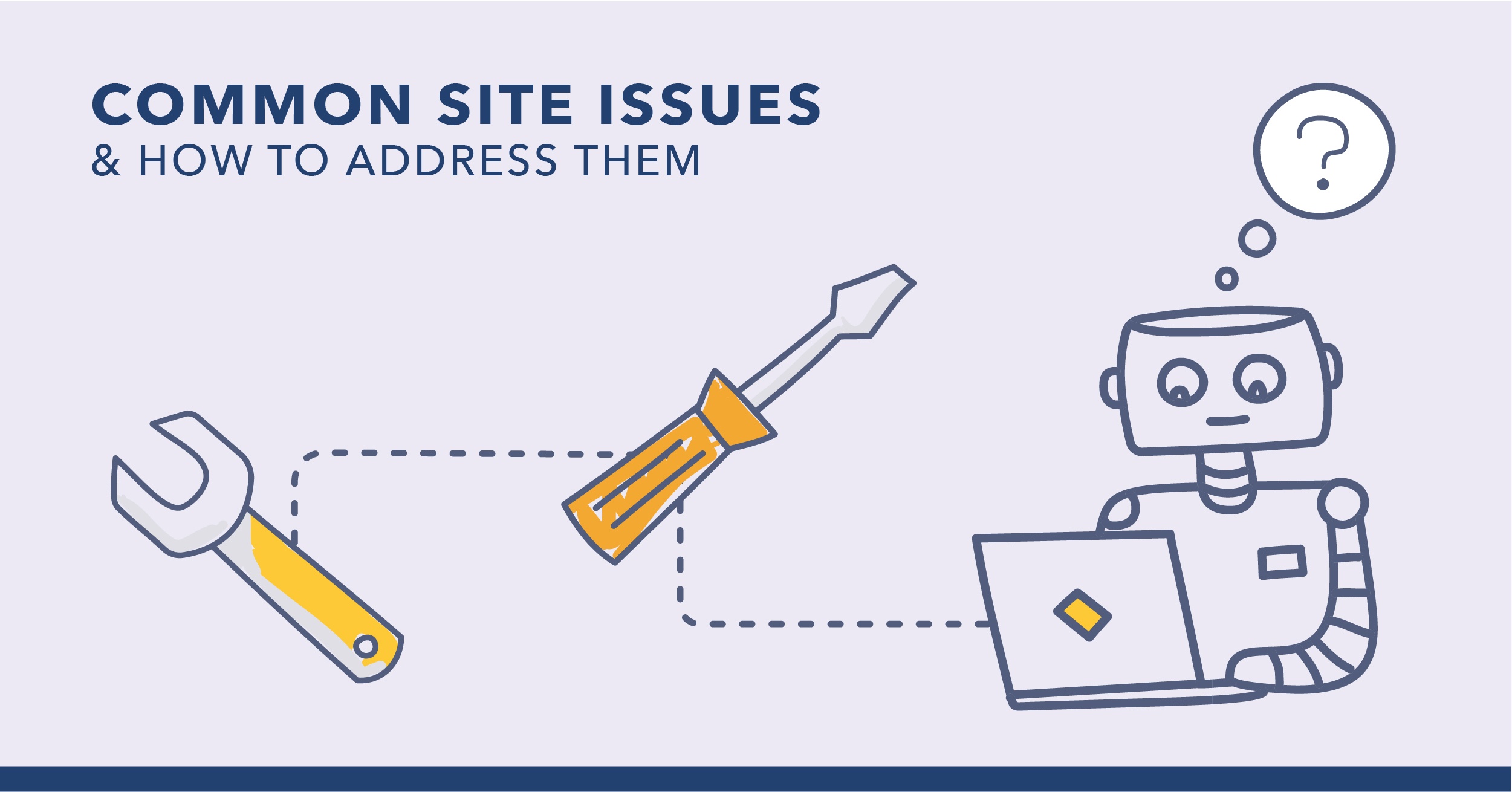We rely on artificial intelligence so much these days.
Google’s AI in Google Maps helps us avoid traffic using anonymized data from smartphones. The search engine also uses RankBrain to serve us better search results.
Thanks to machine learning, Gmail is capable of stopping 99% of spam, saving us a lot of time and frustration.
Credit card processors use AI to detect fraud, protecting our businesses and personal finances … the list goes on.
It’s no different with content.
By providing insights and data, AI-driven content optimization tools help guide the writing process by providing the top keywords to use when covering the topic. Or, as in the case of Yahoo! Sports, for example, even generate content in its entirety.
That being said, creating AI-driven content at a scale carries a risk of losing the powerful, emotional connection human-written content contains.
At least, it feels that way today. The question is how to leverage AI in content creation, and merge human editors and machines to create quality content that helps boost SEO without risking the brand reputation.
We’ll talk about how combining the human experience with machine-learning can deliver incredibly powerful content at scale.
Why Include AI in SEO Content?
Content creators face an enormous range of challenges today.
Audience and user engagement is one. As content marketing adoption comes close to 100%, the quality required to engage the audience becomes more critical. What's more, this becomes challenging to do at scale.
Writers are responsible for creating content at a scale capable of supporting an enterprise digital marketing strategy.
This means identifying countless relevant topics and queries, researching how they relate to the audience’s needs, mapping them with their products or services, and also, understanding how they can better expand them.
Then, there’s the authority and topic expertise every content piece must convey.
The sheer research alone required to meet all of those challenges makes it almost impossible for many organizations to keep up.
Artificial Intelligence can help overcome most of those challenges.
Thanks to machine-learning algorithms, brands can acquire insights into:
- Their audience’s needs,
- Content ideas capable of engaging their target buyers, and even,
- Specific phrases to make the content more authoritative.
Writers can get most of this insight without AI. It's part of writing. However, the resources required to collect and process can be codified and refined, and then ratcheted up beyond what we are capable of.
So, let’s take a look at how this works in detail, starting with the steps required for content creation.
Recommended Reading: Machine Learning and SEO: What Smart Computers Mean for the Future of SEO
SEO Content Creation Process
Here’s a process for writing content that can rank for relevant phrases and engage your target audience, and how AI fits in.
Looking to follow our complete content marketing workflow? We have the perfect resource for you: A Lightning-Fast Guide to the AI Content Marketing Workflow.
Step 1. Determine Your Content Type
Determine the type of content through two factors:
- The intent behind the target keyword, and
- The format that best delivers the information.
That’s where AI-powered content insights comes in handy. By analyzing countless data about the keyword from search volume trends to the characteristics of top ranking content, Content Fusion shows intent based on what Google shows the searcher.
For example, in this article I'm writing about "AI in SEO." So, I wonder: What is the searcher's intent in this situation?

(A look at a Content Fusion analysis.)
In seconds, I have my answer: Informational. This searcher is looking to learn, not buy something, navigate to a specific spot on the web, or find something near them. I also see top ranking articles on the SERP that confirm the insight, as we're seeing "how to" and think pieces.

Now the format of the content. To me there are three options for that:
- Marketing support, aiming to position a product or service from the brand as the solution to searcher’s problem and back up the brand positioning. Did I mention Content Fusion?
- Evergreen content, carrying information that will engage the stable audience. Common examples include category pages or resource lists.
- Relevant or newsworthy content, and focusing on something new the audience will love.
Step 2. Research the Audience
To write content that provides the best search experience a writer must thoroughly understand the searcher's needs.
From the reasons for seeking this specific advice out (the intent) to the mindset they have while searching (how the problem affects them).
Then, they need to map their findings to relevant, additional topics to include in the content. Once these target keywords are associated to the page you need to understand the actual content that the searcher will want to find. Content Fusion greatly accelerates this by revealing the recommended keywords based on what is on the high ranking pages on Google today. These keywords may not have direct search volume but they are essential to the topic and a great use of AI to better research the needs of audience.
It also helps to identify questions the target audience asks online about the problem. And that’s where tools can help streamline the process too.
Content Ideas, one of many seoClarity’s capabilities, is the largest People Also Ask dataset, which allows writers to uncover the questions that users have around a certain query.

Step 3. Research the Opportunity
Most writers would conduct at least some sort of opportunity analysis. They’d look at the information others provide on the topic, looking for ways to improve their content and outdo the competition.
This often means reviewing the top ranking content to assess the breadth of information on the topic.
You can also review your analytics to find keywords you already earn impressions for to gauge your opportunity.
Step 4. Create the Content
Finally, after all the research above, a person can begin compiling the information into content.
But even at this stage, they’d have many additional decisions to make:
- The style of their page.
- The content’s length.
- Formatting, and much more
Recommended Reading: Is It Possible for an SEO Platform to Provide Full Content Automation?
And then, there’s the problem of scaling content production.
Most enterprise SEOs face the challenge of increasing their content output eventually. Even if they start small, with a handful of pages a month, soon, the demand scales that production significantly.
That, in turn, requires processing even more data to plan, deliver, and promote all those content assets.
AI can speed up many aspects of the content process and helps organizations scale. By providing data instantly at the planning stage and guiding the actual content development, AI empowers writers to create better content, and also create much more of it in a shorter time.
There are, however, some risks associated with AI in SEO.
Risks of AI Content Creation
Content that’s based on AI-powered insight might feel robotic, especially if the person writing it put more emphasis on AI insights than the style or tone of voice.
Yahoo Sports uses Natural Language Generation (NLG for short) to create recaps and other content. NLG is a system that can automatically generate narratives and reports in an easy-to-read language.
It often sounds a bit dry, a challenge that innovative companies like Narrative Science in Chicago are trying to solve.
Also, AI-powered content might lack personality a writer with experience in the topic could bring.
When a machine decides on all the key aspects of the content – length, information to include or phrases to use – the result is restricted by what it can find online.
A writer tapping into their personal experience could fill a page with details hard to find anywhere else.
That’s where the human element in AI content creation comes in to accelerate the process to create a great search experience; to leverage the tools available to recognize the topic people will most engage with and what Google and people alike are always searching for.







Comments
Currently, there are no comments. Be the first to post one!